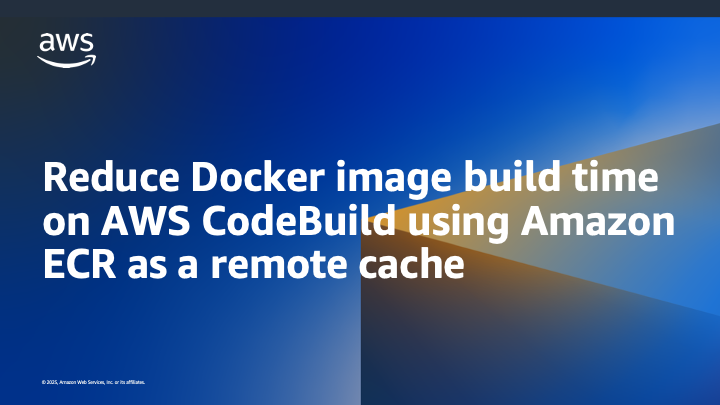AWS DevOps & Developer Productivity Blog
Category: AWS CodeBuild
Reduce Docker image build time on AWS CodeBuild using Amazon ECR as a remote cache
In modern software development, containerization with Docker has revolutionized how we build and deploy applications. While Docker enables packaging applications into portable containers, the continuous need to update these images can be resource intensive. AWS CodeBuild addresses this challenge by providing a managed build service that eliminates infrastructure maintenance overhead. In this blog post, we’ll […]
AWS CodeBuild Managed Self-Hosted GitHub Action Runners
AWS CodeBuild now supports managed self-hosted GitHub Action runners, allowing you to build powerful CI/CD capabilities right beside your code and quickly implement a build, test and deploy pipeline. Last year AWS announced that customers can define their GitHub Actions steps within any phase of a CodeBuild buildspec file but with a self-hosted runner, jobs […]
Simplify Amazon EKS Deployments with GitHub Actions and AWS CodeBuild
In this blog post, we will explore how to simplify Amazon EKS deployments with GitHub Actions and AWS CodeBuild. In today’s fast-paced digital landscape, organizations are turning to DevOps practices to drive innovation and streamline their software development and infrastructure management processes. One key practice within DevOps is Continuous Integration and Continuous Delivery (CI/CD), which […]
Best practices for managing Terraform State files in AWS CI/CD Pipeline
Introduction Today customers want to reduce manual operations for deploying and maintaining their infrastructure. The recommended method to deploy and manage infrastructure on AWS is to follow Infrastructure-As-Code (IaC) model using tools like AWS CloudFormation, AWS Cloud Development Kit (AWS CDK) or Terraform. One of the critical components in terraform is managing the state file which […]
AWS CodeBuild adds support for AWS Lambda compute mode
AWS CodeBuild recently announced that it supports running projects on AWS Lambda. AWS CodeBuild is a fully managed continuous integration (CI) service that allows you to build and test your code without having to manage build servers. This new compute mode enables you to execute your CI process on the same AWS Lambda base images […]
Blue/Green deployments using AWS CDK Pipelines and AWS CodeDeploy
Customers often ask for help with implementing Blue/Green deployments to Amazon Elastic Container Service (Amazon ECS) using AWS CodeDeploy. Their use cases usually involve cross-Region and cross-account deployment scenarios. These requirements are challenging enough on their own, but in addition to those, there are specific design decisions that need to be considered when using CodeDeploy. […]
Implementing automatic drift detection in CDK Pipelines using Amazon EventBridge
The AWS Cloud Development Kit (AWS CDK) is a popular open source toolkit that allows developers to create their cloud infrastructure using high level programming languages. AWS CDK comes bundled with a construct called CDK Pipelines that makes it easy to set up continuous integration, delivery, and deployment with AWS CodePipeline. The CDK Pipelines construct […]
Load test your applications in a CI/CD pipeline using CDK pipelines and AWS Distributed Load Testing Solution
Load testing is a foundational pillar of building resilient applications. Today, load testing practices across many organizations are often based on desktop tools, where someone must manually run the performance tests and validate the results before a software release can be promoted to production. This leads to increased time to market for new features and […]
Running GitHub Actions in a private Subnet with AWS CodeBuild
Note: Customers no longer need to manage their own GitHub runners, you can now use AWS CodeBuild for managed GitHub Actions self-hosted runners, which provides ephemeral and scalable runner environment with strong security boundaries and low start up latency. With AWS CodeBuild, you don’t need to maintain your own infrastructure or build scaling logic, as […]
Automated Code Review on Pull Requests using AWS CodeCommit and AWS CodeBuild
Pull Requests play a critical part in the software development process. They ensure that a developer’s proposed code changes are reviewed by relevant parties before code is merged into the main codebase. This is a standard procedure that is followed across the globe in different organisations today. However, pull requests often require code reviewers to […]









